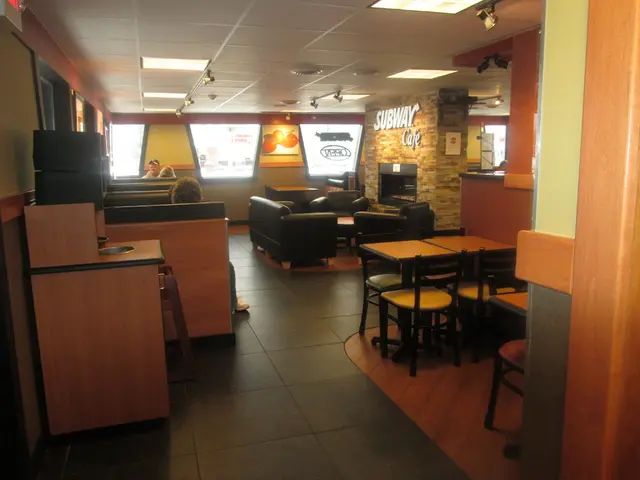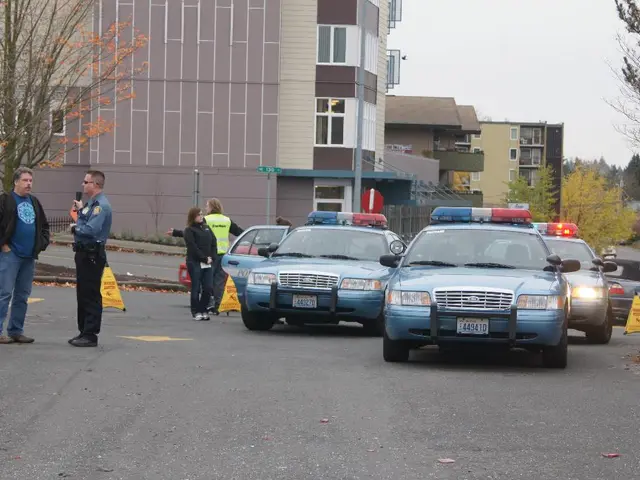Rooftop worker meets tragic end in workplace incident - Worker Plummets Fataly in Tragic On-Site Mishap
Here's the lowdown: A 45-year-old roofer met a tragic end in a workplace accident in the heart of Rostock. The incident occurred in Schmarl district, according to officials, where our poor dude took a tumble off a roof while on the job. He didn't make it, sadly perishing on the spot.
Police have launched an investigation to unravel the precise details surrounding this unfortunate event. As of now, they've kept mum on the specifics.
The Dangerous Dance on the Rooftops
Roofing work isn't for the faint-hearted. It's a perilous endeavor that comes with a substantial list of risks due to the high-altitude nature of the job and the handling of various materials and tools. Let's shed some light on the common pitfalls and crucial safety measures to prevent such mishaps:
Common Perils on the Roof
- Falls from Heights: Remember when we were kids, and falling off the monkey bars made us want to cry? Imagine that multiplied a thousand times, and you've got an idea of what falls from heights mean in the construction world. Unattended edges, wobbly roofs, and dodgy ladders are frequent offenders[1][2].
- Adverse Weather Conditions: Working splashing wet in a rainstorm or slipping around in snowy conditions? Not the ideal situation, mate. Weather can make roofing jobs a lethal cocktail[1].
- Electrical Fiascos: Messing with electricity while hovering near power lines? Not a smart move, mate. This can lead to shocks, burns, and even fires[1].
- Dangerous Power Tools: Power tool misuse is the culprit behind many accidents[1].
- Hazardous Materials: Exposure to perilous materials like asbestos during roofing work is a significant threat[4].
Safety Tips to Avoid Tumbling Off
- Proper Fall Protection:
- Cling to harnesses and lanyards, securely latching them onto sturdy anchor points.
- Install guardrails, safety nets, and hole covers wherever necessary[4].
- Keep regular tabs on scaffolding and fall protection equipment[4].
- Weather Safety:
- Equip workers with proper clothing for different weather scenarios.
- Devise strategies to ensure workers stay safe amidst extreme temperatures and weather circumstances[1].
- Electrical Safety:
- Carry out regular electrical safety assessments.
- Educate workers about the safe handling of electrical equipment near power lines[1].
- Power Tool Safety:
- School workers in proper power tool usage.
- Keep tabs on power tool maintenance to prevent malfunctions[1].
- Hazardous Materials Management:
- Establish stringent protocols for handling hazardous materials.
- Provide workers dealing with hazardous materials with essential protective gear and training[4].
- Continuous Training and Inspections:
- Keep workers in the loop with ongoing safety training sessions.
- Regularly survey sites to spot and neutralize potential hazards[1][4].
By adhering to these guidelines, construction companies can minimize the risk of such accidents and create a safer haven for roofers. Let's hope this tragic event serves as a wake-up call for greater worker safety in our industry. #SafetyFirst !
[1] Occupational Safety and Health Administration (OSHA) - [https://www.osha.gov/construction/index.html]
[2] Center for Construction Research and Training - [https://www.cpwr.com/]
[3] National Institute for Occupational Safety and Health (NIOSH) - [https://www.cdc.gov/niosh/construction/default.html]
[4] Environmental Protection Agency (EPA) - [https://www.epa.gov/asbestos]
- The Commission, concerned with the general-news surrounding the recent fatal roofing accident in Rostock, might find it beneficial to implement workplace-wellness programs focusing on health-and-wellness practices and science-backed safety measures to prevent similar accidents.
- To create a safer work environment for roofers, one can draw useful insights from science literature covering fall protection, weather safety, electrical safety, power tool safety, hazardous materials management, and continuous training and inspections – strategies that have been proven effective by organizations like the Occupational Safety and Health Administration (OSHA), Center for Construction Research and Training, National Institute for Occupational Safety and Health (NIOSH), and the Environmental Protection Agency (EPA).
- While science serves as a valuable tool in minimizing risks and improving safety in the workplace, it's essential for the Commission to stay informed on foreign affairs, including the situation in the country concerned, as the quality of welfare provided to workers may be directly linked to the stability and prosperity of the country in question.








